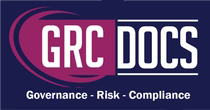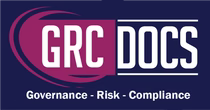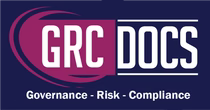SOC 2 Readiness Program Setup A Complete Step-By-Step Guide
Introduction
In today's digital age, ensuring the security and confidentiality of customer data is paramount for any organization. Data breaches and cyber threats have become increasingly sophisticated, making it essential for businesses to adopt robust security measures. Achieving SOC 2 certification is a significant step in demonstrating your commitment to data security. It not only reassures clients and stakeholders of your capability to protect sensitive information but also enhances your organization's reputation in the industry. This article will guide you through setting up a SOC 2 readiness program, ensuring your organization is well-prepared for the certification process.

Why SOC 2 Compliance Matters
In an era where data breaches are increasingly common, SOC 2 compliance is not just a regulatory requirement but also a competitive advantage. It reassures clients and partners that your organization has robust controls to safeguard their data. With the increasing reliance on cloud services and third-party vendors, businesses need to ensure that their partners are equally committed to data security. Additionally, many companies now require their vendors to be SOC 2 compliant, making it essential for maintaining and expanding your business relationships. Failing to meet SOC 2 standards could result in lost opportunities and could put your organization at a competitive disadvantage.
Steps To Establish A SOC 2 Readiness Program
Setting up a SOC 2 readiness program involves several critical steps. Let's delve into the process to ensure your organization is ready for the SOC 2 audit. Proper planning and execution of these steps can streamline the certification process and minimize potential setbacks.
-
Define Your Objectives: Before diving into the SOC 2 readiness program, it's crucial to define your objectives. What do you aim to achieve with SOC 2 certification? Is it to meet customer expectations, enter new markets, or strengthen your security posture? Clear objectives will guide your efforts and help maintain focus throughout the process. By setting precise goals, you can tailor your readiness program to address specific organizational needs, ensuring that resources are allocated effectively and efficiently.
-
Identify Scope and Boundaries: Determine which systems, processes, and services will be included in the SOC 2 audit. It's essential to establish clear boundaries to avoid scope creep and ensure the audit remains manageable. Collaborate with key stakeholders to identify critical components that impact the Trust Service Criteria. This collaboration not only helps in defining the scope but also in gaining insights into different facets of your operations, which may be crucial for the audit. Clear boundaries ensure that your efforts are concentrated on the most relevant areas, making the audit process more efficient.
-
Conduct a Gap Analysis: A gap analysis is a crucial step in your SOC 2 readiness journey. It involves assessing your current controls and processes against the SOC 2 requirements. Identify areas where your organization falls short and prioritize them based on risk and impact. This analysis will form the foundation of your remediation plan. By understanding these gaps, you can address vulnerabilities that might otherwise go unnoticed, reducing the risk of audit failures and enhancing your overall security posture.
- Develop a Remediation Plan: Once you've identified gaps, it's time to create a remediation plan. This plan outlines the specific actions needed to address deficiencies and achieve SOC 2 compliance. Assign responsibilities, set realistic timelines, and allocate necessary resources to ensure successful implementation. A well-structured plan facilitates coordination among team members and ensures that everyone is on the same page, which is crucial for timely and effective remediation. Continuous monitoring and adjustment of the plan can help in accommodating any unforeseen challenges during the implementation phase.
Implementing Controls And Processes
With a remediation plan in place, it's time to implement the necessary controls and processes to meet SOC 2 requirements. These controls form the backbone of your compliance strategy, safeguarding your organization against potential threats.
-
Establish Security Policies: Security policies are the backbone of your SOC 2 readiness program. Develop comprehensive policies that cover all aspects of the Trust Service Criteria, including data protection, access controls, incident response, and risk management. Ensure these policies are communicated effectively to all employees and regularly reviewed for relevance. Regular updates and training sessions can help employees understand and comply with these policies, ensuring that everyone is aligned with organizational security goals.
-
Implement Technical Controls: Technical controls play a vital role in achieving SOC 2 compliance. This includes implementing firewalls, encryption, intrusion detection systems, and access controls to protect sensitive data. Regularly test and update these controls to adapt to evolving threats and vulnerabilities. Continuous monitoring and testing are essential to ensure that these controls remain effective and can respond swiftly to potential security incidents, minimizing potential damage.
- Train Your Team: Your employees are a critical component of your SOC 2 readiness program. Conduct training sessions to educate them about SOC 2 requirements, security policies, and their roles in maintaining compliance. Foster a culture of security awareness to ensure everyone understands the importance of data protection. Regular workshops and drills can reinforce learning and prepare your team to handle real-world scenarios effectively, reducing human error risks in security breaches.
Preparing For The SOC 2 Audit
With controls and processes in place, it's time to prepare for the SOC 2 audit. Thorough preparation can ease the audit process, making it less daunting and more manageable.
-
Conduct a Pre-Audit Assessment: Before the official SOC 2 audit, conduct a pre-audit assessment to identify any lingering issues. This assessment simulates the audit process, allowing you to address potential deficiencies and refine your documentation and evidence. It serves as a trial run, giving you a chance to rectify any issues before the actual audit, thus enhancing your chances of a successful outcome.
-
Gather Documentation and Evidence: Documentation is a critical aspect of SOC 2 compliance. Ensure all policies, procedures, and evidence of control implementation are well-documented and organized. This documentation will be crucial during the audit, demonstrating your adherence to SOC 2 requirements. A systematic approach to documentation can reduce the time and effort needed to respond to auditor queries, streamlining the audit process.
- Engage a Third-Party Auditor: Engaging an independent auditor is a key step in the SOC 2 readiness program. Choose a reputable auditing firm with experience in SOC 2 assessments. Collaborate closely with the auditor to ensure a smooth and successful audit process. Their expertise can provide valuable insights and guidance, helping you navigate complex compliance requirements and avoid common pitfalls.
Maintaining SOC 2 Compliance
Achieving SOC 2 certification is not a one-time event but an ongoing commitment. Here are some tips for maintaining compliance, ensuring that your organization remains secure and trustworthy.
-
Regularly Review and Update Controls: Data security is a dynamic field, and your controls should evolve accordingly. Regularly review and update your security policies and technical controls to address emerging threats and changing business needs. Staying proactive and adaptable is crucial to maintaining robust security measures that can withstand new challenges.
-
Conduct Periodic Internal Audits: Internal audits are valuable for identifying potential compliance issues before they become significant problems. Schedule regular internal audits to assess the effectiveness of your controls and make necessary improvements. These audits can help in maintaining a state of continual readiness, ensuring that any minor issues are addressed promptly before they escalate.
- Foster a Culture of Security: Promote a culture of security within your organization. Encourage employees to report security incidents, provide ongoing training, and reward proactive security measures. A security-conscious culture will help maintain SOC 2 compliance and protect your organization's reputation. By embedding security into your corporate culture, you can ensure that every employee contributes to a secure and compliant environment.
Conclusion
Setting up a SOC 2 readiness program is a crucial step toward achieving SOC 2 certification and demonstrating your commitment to data security. By following the outlined steps and maintaining a proactive approach to compliance, your organization can successfully navigate the SOC 2 audit process and build trust with clients and partners. Invest in data security today to safeguard your organization's future. As the digital landscape continues to evolve, maintaining SOC 2 compliance will not only protect your organization but also position it as a leader in secure business practices.






